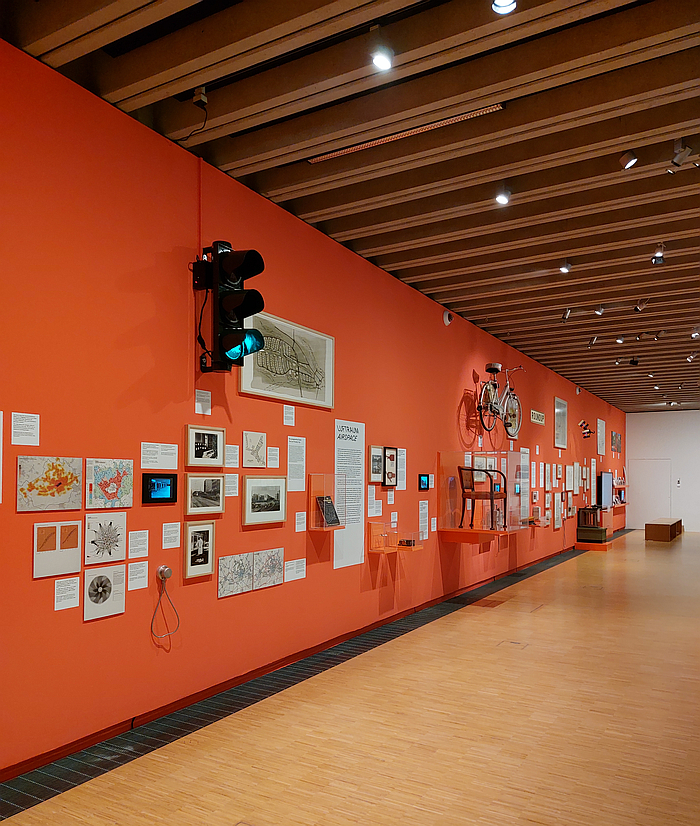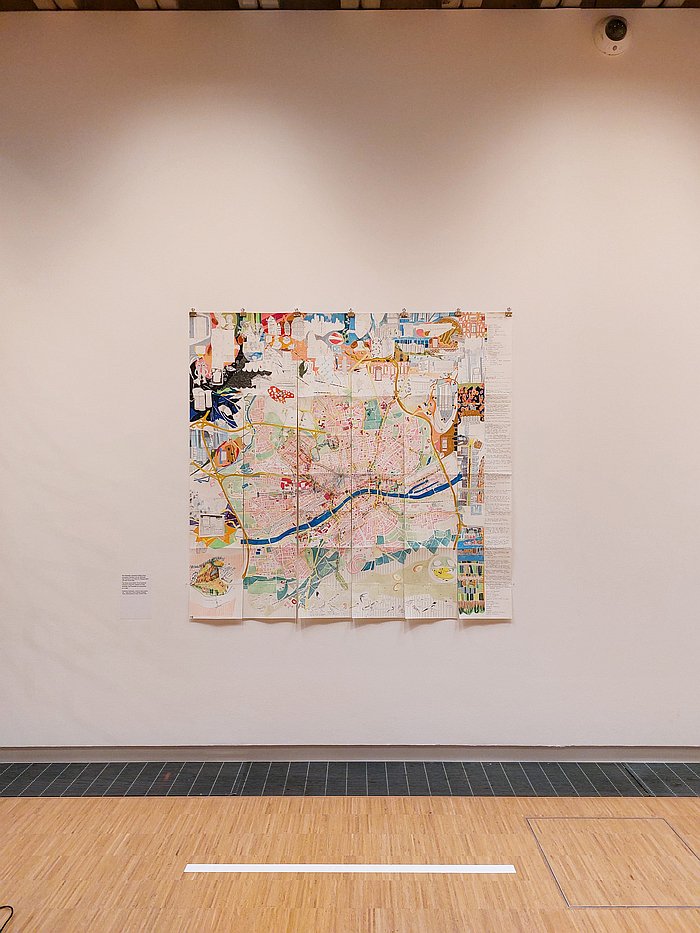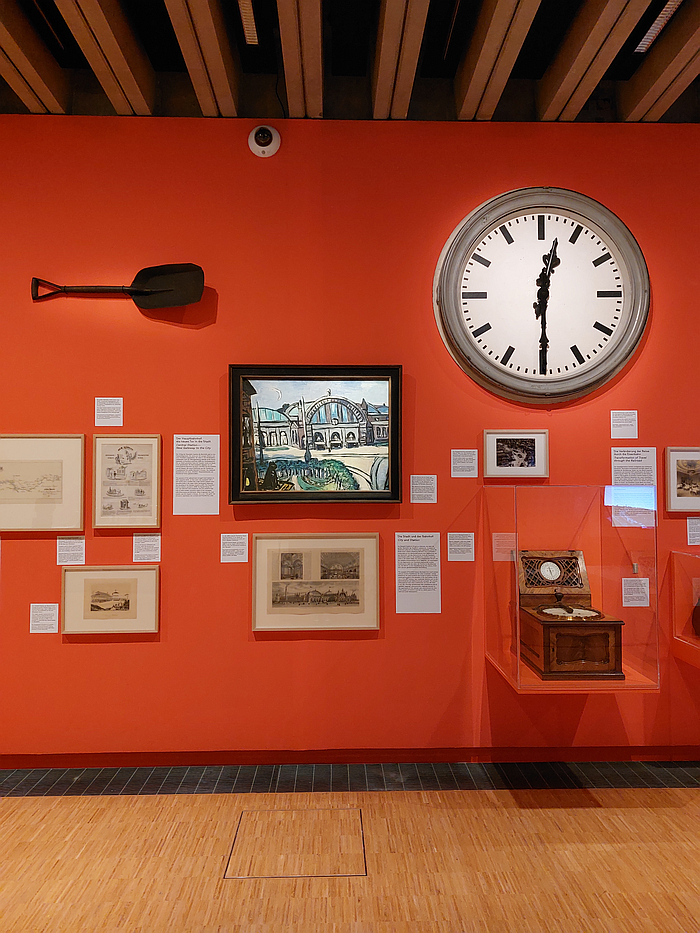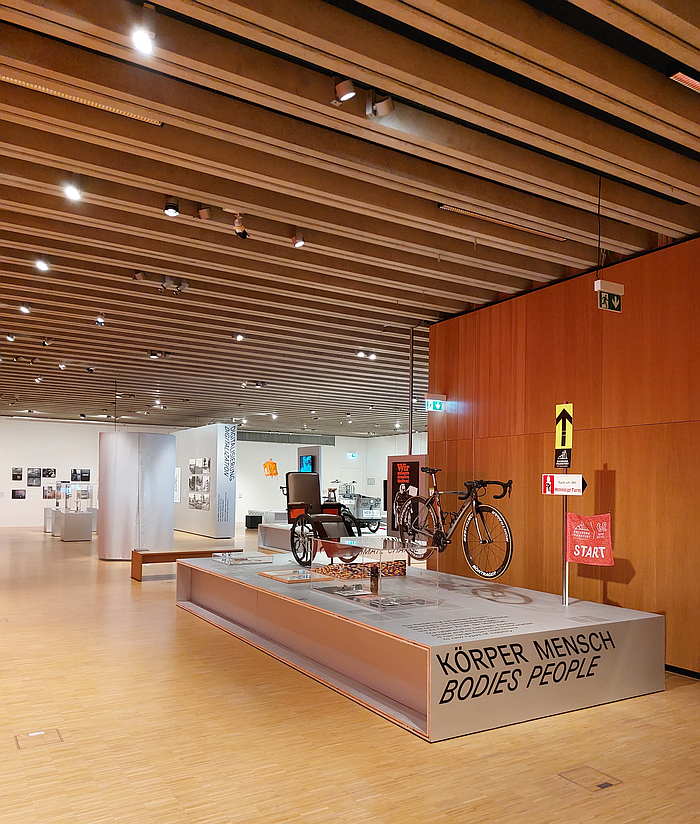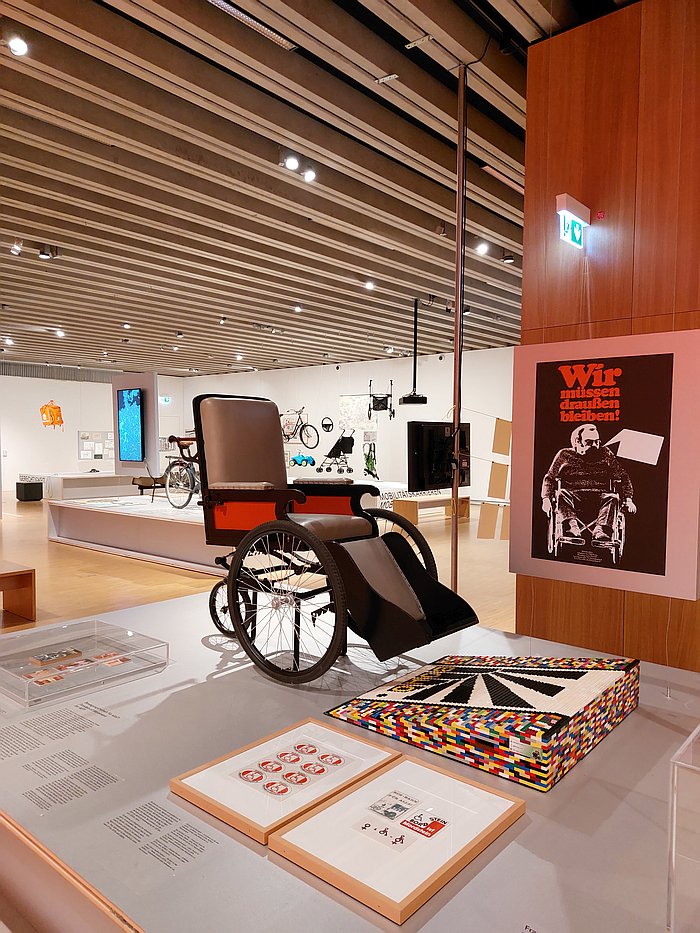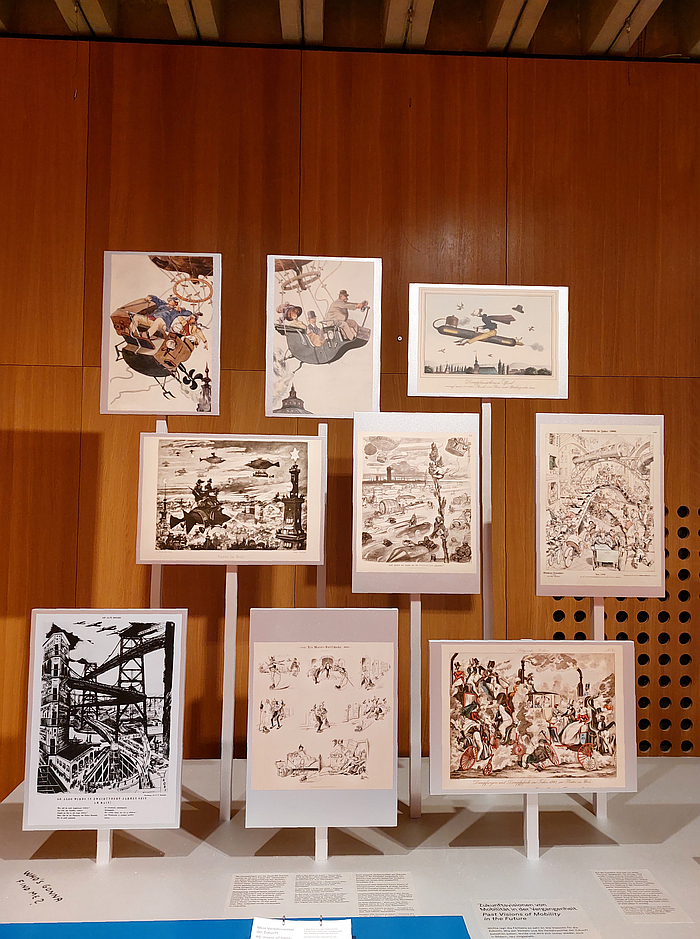For all that the (hi)story of the human species is one of movement, of the physical relocation of individuals and communities, be that temporarily or permanently, it is also one of the development of forms of movement and of the development of our relationships with the act of moving.
With the exhibition On the Move! Frankfurt and Mobility the Historisches Museum Frankfurt explore those developments.......
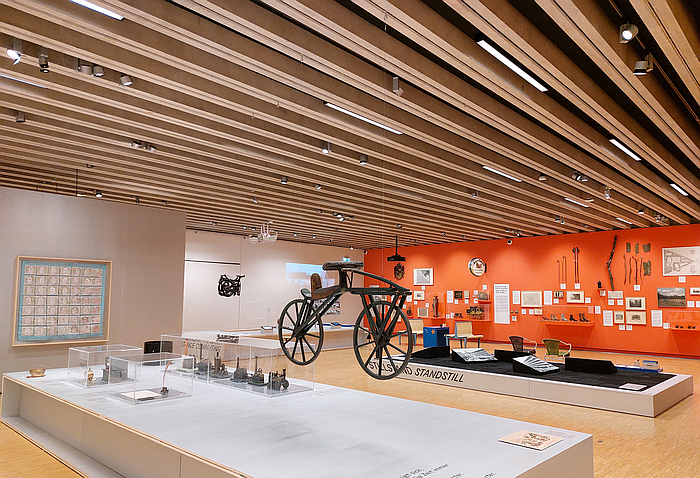
As an exhibition On the Move! Frankfurt and Mobility explores and discusses its subjects via two inter-twining strands, one could argue two inter-twining movements: the one focussing primarily on the Mobility of the title, the other on the Frankfurt of the title.
The Mobility strand/movement opening with the chapter Tempo Time: Time as an almost passive form of movement but one that none of us can avoid, Tempo, of which an argument can be made, often is made, that it is ever increasing, that everything is getting quicker. But is it? Or do we just have more to do? Did Frankfurt's most famous son Johann Wolfgang Goethe have time to achieve the myriad things he did because everything moved slower, or did he have less to do in a much simpler world? How much of his canon would a Goethe achieve today? How much, which of his various projects, would he have to put on the back-burner of infinity? Has speed or volume changed? What would Seneca say?
And Tempo and Time which we all often wish would cease, or to quote Belle and Sebastian, we all often silently solicit I Want the World to Stop. Which it more or less did in 2020 against the background of Covid: an important reminder of the perils of occasionally getting that which you wish for. And Covid years that are a central component of the chapter Standstill, a chapter which also presents a parking meter, that device which allows us to pay to be immobile, that stops movement for hard cash. Reminds that those who can afford it have more control over their movement than those who can't.
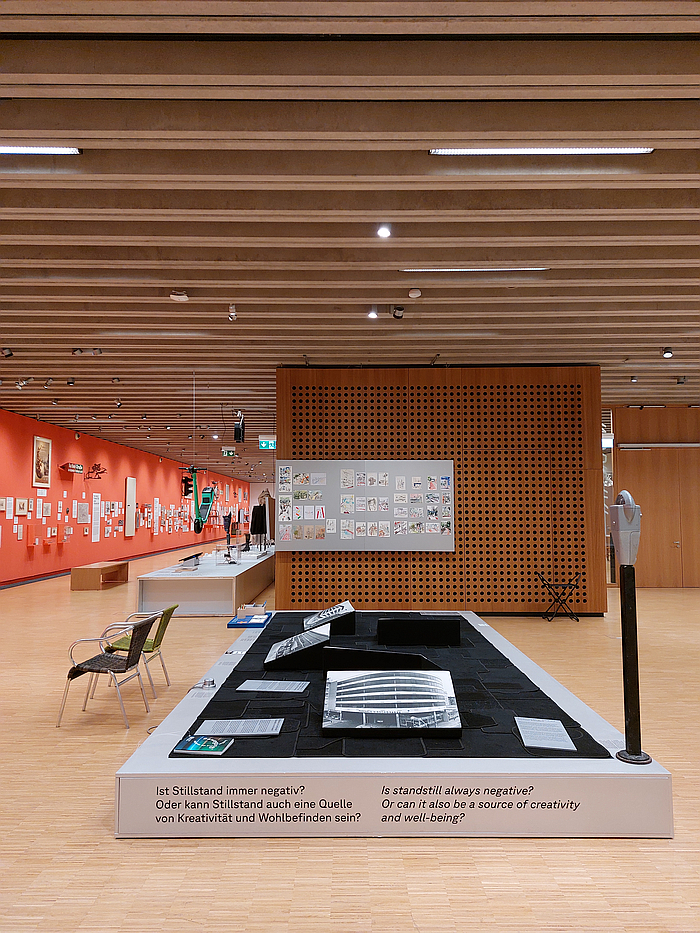
If but a momentary Standstill, for the Historisches Museum's exhibition is once again quickly On the Move... Sorry!!... via chapters exploring, for example, Distance Commuting which aside from that movement enforced by the demands of Capital, also allows for reflections on the movement of plants, the natural movement of plants rather than the enforced movement highlighted by Plant Fever. Towards a Phyto-centred design at Schloss Pillnitz, Dresden or Garden Futures. Designing with Nature at the Vitra Design Museum, Weil am Rhein, and also the exponential rise in the early 20th century of movement as a leisure activity as enabled by the private car; Progress with its argument that progression in terms of mobility isn't just, or perhaps more accurately, shouldn't just, be considered in context of the physical act of movement alone but also in context of making mobility socially and environmentally more progressive, more responsible, with the very pertinent question of how often we manage that, and how often we develop new forms of mobility discrimination/discrimination through access to mobility, how often do we develop new forms of parking meters? See the rise of the private car in the early 20th century. Or the demise of the 9 Euro ticket in Germany. And a chapter that includes a number of historic cartoons that help underscore that the contemporary mania for flying cars is as old as industrial society; and that the very obvious problems of flying cars, and their delivery drone cousins, we all steadfastly ignore today in the name of a perceived Progress, have been known equally as long. Or the chapter Justice which aside from approaching the question of global migration from a number of perspectives also highlights not only the reality for the increasing millions of individuals who move through our urban spaces on bikes delivering both take-away meals and the groceries we're increasingly refusing to source ourselves, ¿and why does anyone even need their groceries in 20 minutes? but also how those food-bearing cyclists relate to and are a component of changes in urban society, in the urban human species. And not just in context of the marked move away from the human as a hunter-gatherer they represent, on humans as ever more dependent on others, ever less self-sufficient, and thus ever more vulnerable and exposed.
On the Move!'s Mobility strand/movement ends with Utopia, a chapter that, pleasingly, avoids the very real temptation to explore mobility utopias past, a subject that, in many regards was a component of Back to Future. Technology visions between fiction and reality at the Museum für Kommunikation, Frankfurt, and instead poses the question of How can we best use the shared urban space and our mobility within it? A question that when posed at the end of exhibition you realise has run through the Mobility strand/movement, that the discussion undertaken in and by the Mobility strand/movement has also been an attempt to stimulate a questioning of decisions made as components of a search for answers to mobility in urban spaces. A question that can be approached in a more localised, and by easy extrapolation, universal, manner in the Frankfurt strand/movement.
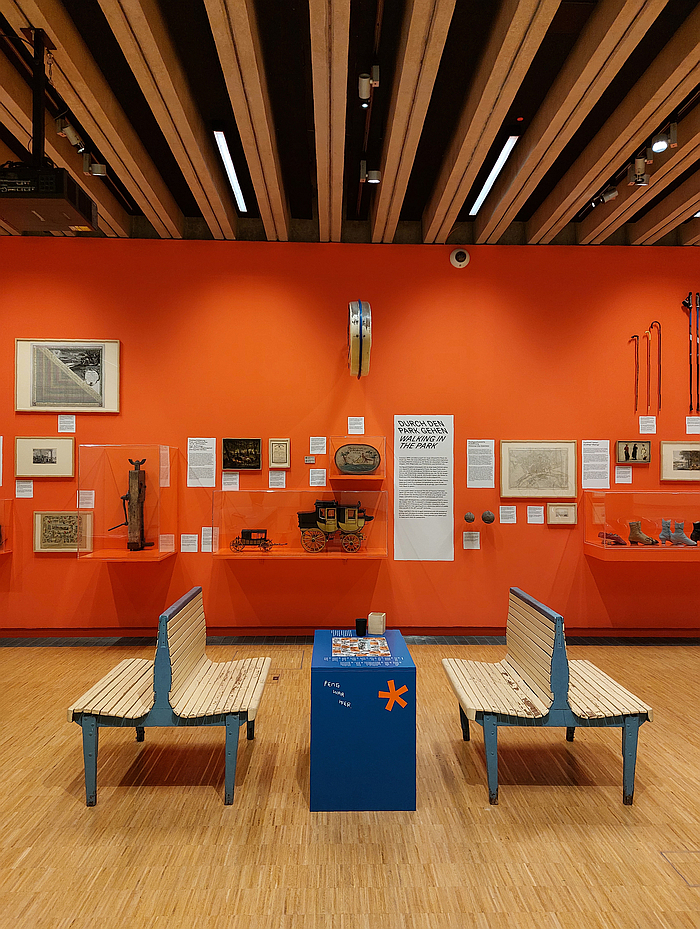
A Frankfurt strand/movement that opens with a discussion on the Postal Service as one of the earliest means of mass public transport, and a very collective means of transport: not only were the carriages compact but, as the curators note, when technical problems arose passengers were expected to assist in the repairs, imagine that today!! And continues over discussions on, for example, Walking in the Park, something that became firmly established in Frankfurt around 1804 when the city's fortifications were demolished and replaced with a network of gardens and promenades, and a rise in popularity of Walking in the Park in the early 19th century that, as one learns, led to changes in the design of women's shoes; Airspace, Frankfurt being as it is home to Germany's largest airport, an institution that brings as many curses as blessings, if a discussion on airspace that regrettably doesn't include the, as noted above, rapidly approaching filling of the airspace over Frankfurt, and everywhere else, with flying cars and delivery drones, which is surely a key component of the question How can we best use the shared urban space and our mobility within it? A question that in terms of flying cars and delivery drones no-one is publicly posing. Tellingly it doesn't appear to have been considered in the development of the Frankfurt Mobility Master Plan, an introduction to which closes the Frankfurt strand/movement. A Mobility Master Plan whose apparent omission of drones and flying cars appears not only reckless but thoroughly reprehensible. And highly irresponsible.
A Frankfurt strand/movement that also touches upon Neues Frankfurt, that important 1920s urban planning project that, as previously noted in context of New Human, New Housing: Architecture of the New Frankfurt 1925–1933 at the Deutsches Architekturmuseum, Frankfurt, was realised in an era before large scale private car ownership and whose housing estates as such aren't designed for large scale private car ownership, meaning that, on the one hand, they struggle with the realities of contemporary urban mobility, but on the other bequeath the estates and their residents an awful lot of green space, much more so than contemporary urban planning in an age of large scale private car ownership. Which helps highlight an important contemporary question: what do we want more of, green spaces or parking spaces?
A question that can also be approached in context of On the Move!'s discussion on the Car-Friendly City, that post 1939-45 War concept for which we thank so many Functionalist Modernist informed architects and urban planners, and that was also a component of the, previously noted, discussion in the early 1950s on the so-called Hanielgarage in Düsseldorf by Paul Schneider-Esleben and the associated plan to require visitors to park on the edge of the city and continue their journey into central Düsseldorf by public transport, a plan that was ultimately rejected by the Düsseldorf city authorities in favour of city centre parking spaces: do we want car free city centres or city centre parking spaces? Similarly the question posed by a Lucius Burckhardt in the 1990s when he held a seminar in two parking spaces near the Gesamthochschule Kassel: do we want space for eduction, or parking spaces? Do we want space for culture or parking spaces? Do we want space for sport or parking spaces? Do we want space for bike lanes or parking spaces? Do we want space for housing or parking spaces? Parking spaces that as On the Move! notes are having to become increasingly larger, the 12 sqms conventionally afforded a car no longer accommodating our ever larger, wider, taller, egoistic cars, meaning we must allocate ever more urban space for parking space. Must allocate ever more urban space for Standstill. And which makes the question of what we lose, and what we gain, when we supply parking space ever more urgent.
And questions that reinforce the inextricable nature of the relationships between how we move and wider society, and the wider environment, that are very much at the core of On the Move!
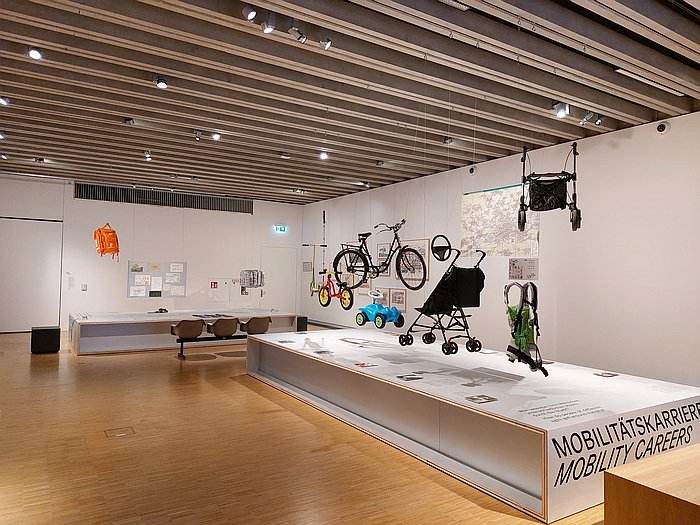
Presenting its two movements in an exhibition design that in addition to a great many interactive elements also juxtaposes the varied and various exhibits from across the centuries with artistic works including, for example, Esther Ernst's Frankfurt urban strolling map in which the city is explored à la Burkhardt's Promenadologie/Strollology, Benedikt Geyer and Katja Kummer's photo-project Bitte nicht setzen! with is documentation of hostile architecture in Frankfurt and thus its view of the city, of any city, as a collection of private spaces and not as the collective space it is normally appreciated as, thus not as the 'shared urban space' of Utopia's question, or Gisela Hafer's Pandemic Diary, a record of the rise in the number of Covid cases between 13th September and 31st October 2020 via cross stitches on disposable masks, On the Move! is a readily accessible discussion on why we move and how we move, on the manners in which those whys and hows have changed over the centuries, and often essentially stayed the same, that allows for differentiated perspectives on how the urban space, and urban society, has developed over those centuries, and of movement's role in those changes.
And that thereby tends to underscore that contemporary, and near-future, decisions on how we move, why we move, why and how others move on our behalf, will be influential in defining both the society of the future and the urban space of the future, both physically and in context of the quality of life within that urban space. A reminder that architecture and urban planning is more than buildings. And that it affects spaces beyond the directly physical, tangible.
And thereby admonishing that we all reflect more openly and honestly on not only why we move through the city, individually and collectively, and how we move through the city, but on how we could move, how we should move, on the urban space our mobility decisions form, on the society our mobility decisions form, and for all admonishes that we consider more carefully than we often do the urban space and the society we want. And our role, individually and collectively, in forming them, in the movement towards them.
On the Move! Frankfurt and Mobility is schedule to run at the Historisches Museum Frankfurt, Saalhof 1, 60311 Frankfurt am Main until Sunday September 14th.
Full details can be found at https://historisches-museum-frankfurt.de/on-the-move
